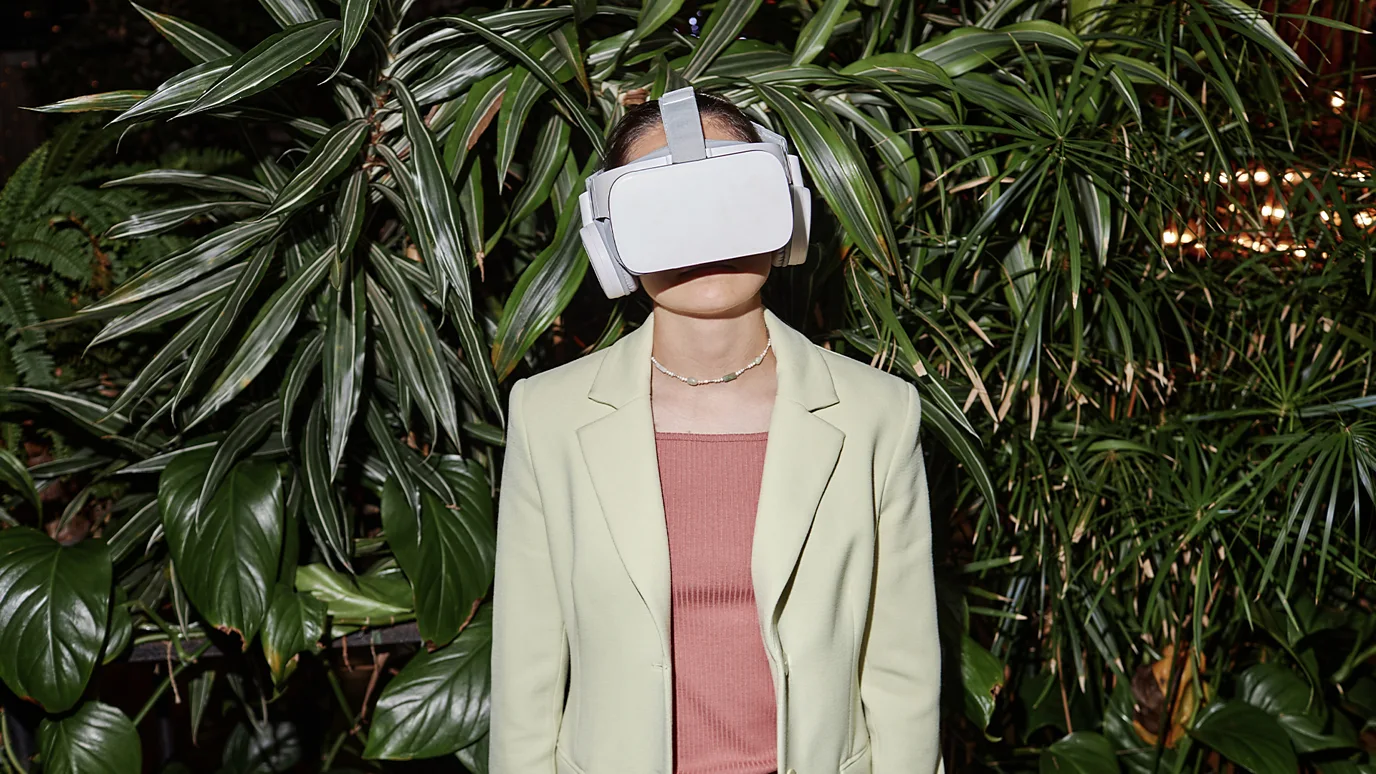
For many, constant bad news numbs our reaction to climate disasters. But research suggests that a new type of immersive storytelling about nature told through virtual reality (VR) can both build empathy and inspire us to act.
I’m crying into a VR headset. I’ve just watched a VR experience that tells the story of a young pangolin called Chestnut, as she struggles to survive in the Kalahari Desert. A vast, dusty landscape extends around me in all directions, and her armoured body seems vulnerable as she curls up, alone, to sleep. Her story is based on the life of a real pangolin that was tracked by scientists.
Chestnut hasn’t found enough to ants to eat, since insect numbers have dwindled due to climate change. Her sunny voice remains optimistic even as exhaustion takes over. In the final scenes, she dies, and I must clumsily lift my headset to dab my eyes.
VR experiences can be a lot more than just moving or fun, research suggests. Scientists are discovering that nature experiences shown through VR can affect our attitudes and behaviours – and that these arresting depictions of nature might nudge us into taking better care of our environment.
My powerful VR experience with Chestnut’s story was made by HabitatXR, a production studio based in Johannesburg. Founder Ulrico Grech-Cumbo launched the company in 2016, following many trips to the African bush during which he captured its green, dusty landscapes and iconic wildlife on camera. He had experience working in VR, and realised that he could translate his footage into something more immersive.
HabitatXR is just one of the companies experimenting with VR technology to create nature experiences. Wild Immersion, based in Paris, take their immersive movies of underwater worlds and snowscapes to science centres and aquariums. And UK artist collective Marshmallow Laser Feast have created immersive experiences that show the forest through the eyes of a dragonfly, and take the viewer “inside” a tree.
The nature experiences developed by HabitatXR are situated in a virtual version of the African savannah. In one, I find myself in a misty landscape dotted with squat, flat-topped acacias. Suddenly a rhinoceros emerges, dangerously close, its enormous horn scything the air as it walks towards me and lowers its head.
Despite the pixelated graphics, I instinctively look down to where my knee should be – to where the rhino’s horn ought to have grazed it. The beast lets out a breathy snort and, mercifully, retreats.
Source: https://www.bbc.com/future/article/20250306-the-future-of-conservation-might-be-in-vr-headsets

